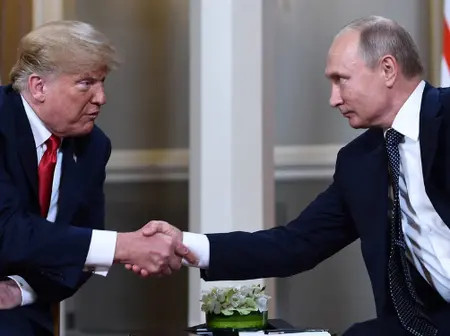Russian President Vladimir Putin has said that Russia is ready to extend the New Strategic Arms Reduction Treaty (New START) by one year if United States (US) President Donald Trump agrees to do the same.
Speaking at a Russian Security Council meeting on September 22, Putin drew attention to the upcoming expiration of the New Strategic Arms Reduction Treaty (New START) in February 2026, the last remaining agreement limiting U.S. and Russian nuclear arsenals.
The treaty, which limits the number of nuclear weapons and delivery systems that both countries can deploy, is set to expire on February 5, 2026.
“Russia is prepared to continue adhering to the central numerical limits under the New START Treaty for one year after 5 February 2026,” said the Russian president.
“Subsequently, based on an analysis of the situation, we will make a decision on whether to maintain these voluntary self-imposed restrictions.
Putin announced that Russia is willing to uphold the treaty’s quantitative limits for an additional year, adding that future restrictions will depend on Russia’s own assessment.
“We believe that this measure will only be viable if the United States acts in a similar manner and does not take steps that undermine or violate the existing balance of deterrence capabilities.”
However, the Russian President further warned that Moscow is “ready to respond to any existing or emerging threats” with “military-technical means” rather than rhetoric alone.
During his address, Putin accused the West of taking “destructive steps” that endanger dialogue between nuclear powers, while asserting confidence in Russia’s deterrent capabilities.
Russia currently holds the world’s largest nuclear arsenal.
According to the Stockholm International Peace Research Institute (SIPRI) 2024 estimates, the US has 3,708 nuclear warheads, while Russia possesses 4,380, excluding retired weapons.
About the New START Treaty
The New Strategic Arms Reduction Treaty (New START) is an agreement between the United States and Russia that limits the number of deployed strategic nuclear weapons.
Additionally, the treaty is designed to enhance global and U.S. national security by placing verifiable limits on Russian and U.S. nuclear arsenals.
The treaty entered into force on February 5, 2011, and both countries were given seven years to meet the central limits, which they achieved by February 5, 2018. These limits are maintained as long as the treaty remains in effect. The United States and Russia have agreed to extend the treaty through February 4, 2026.
The treaty ensures transparency and verification through regular inspections, data exchanges, and notifications, helping to maintain strategic stability between the two nuclear powers.
Follow our WhatsApp Channel and X Account for real-time news updates.

Leave a Reply